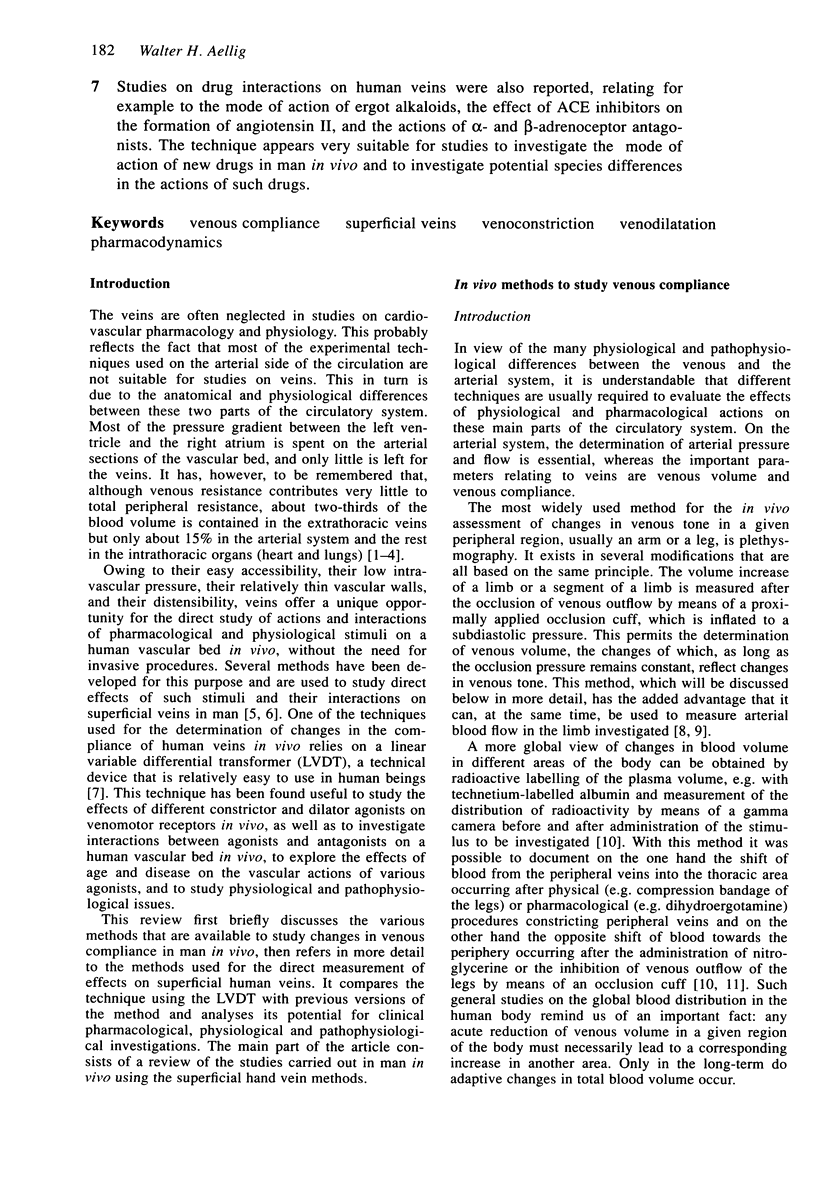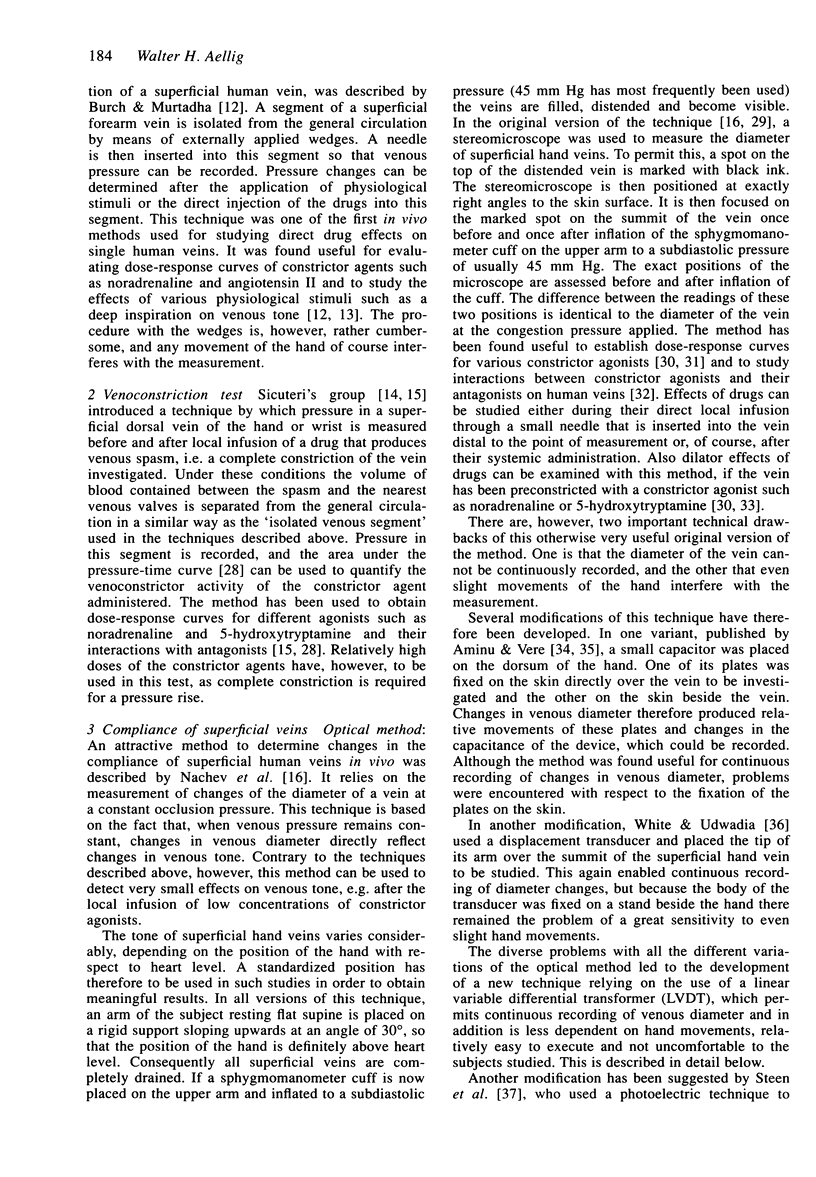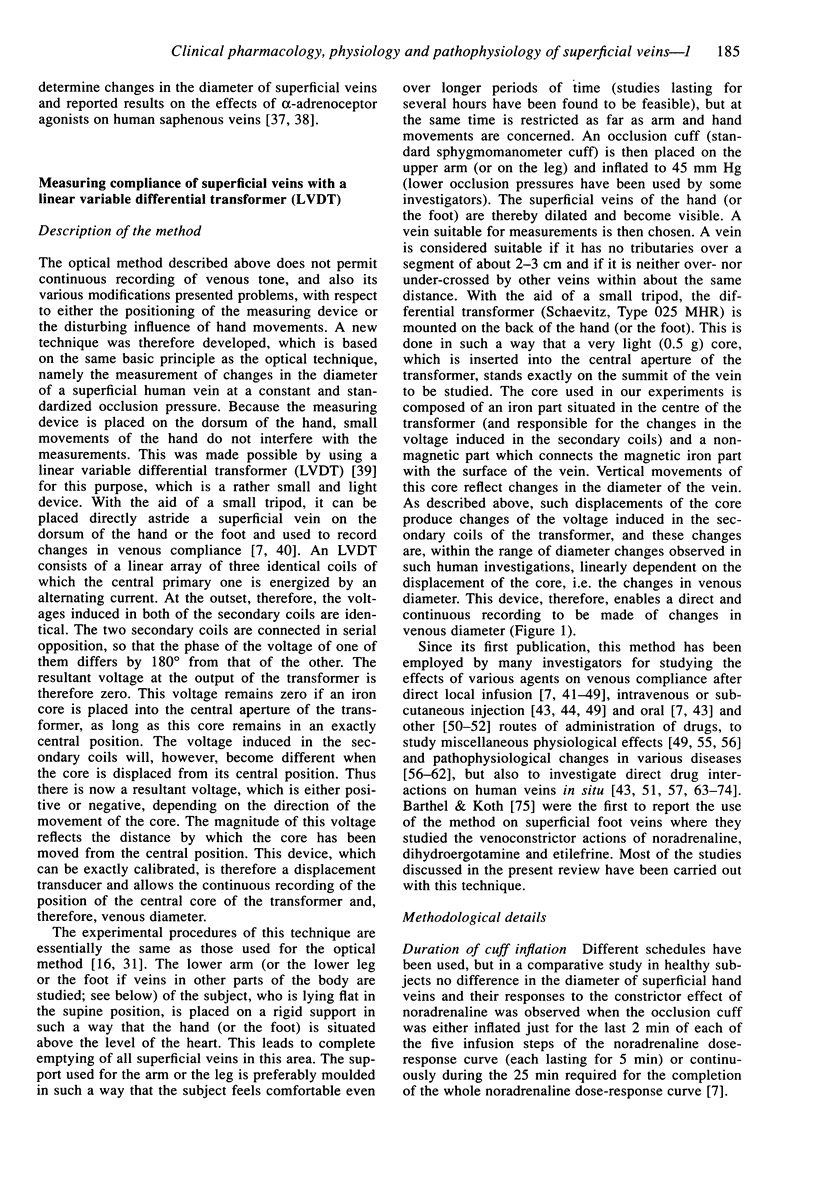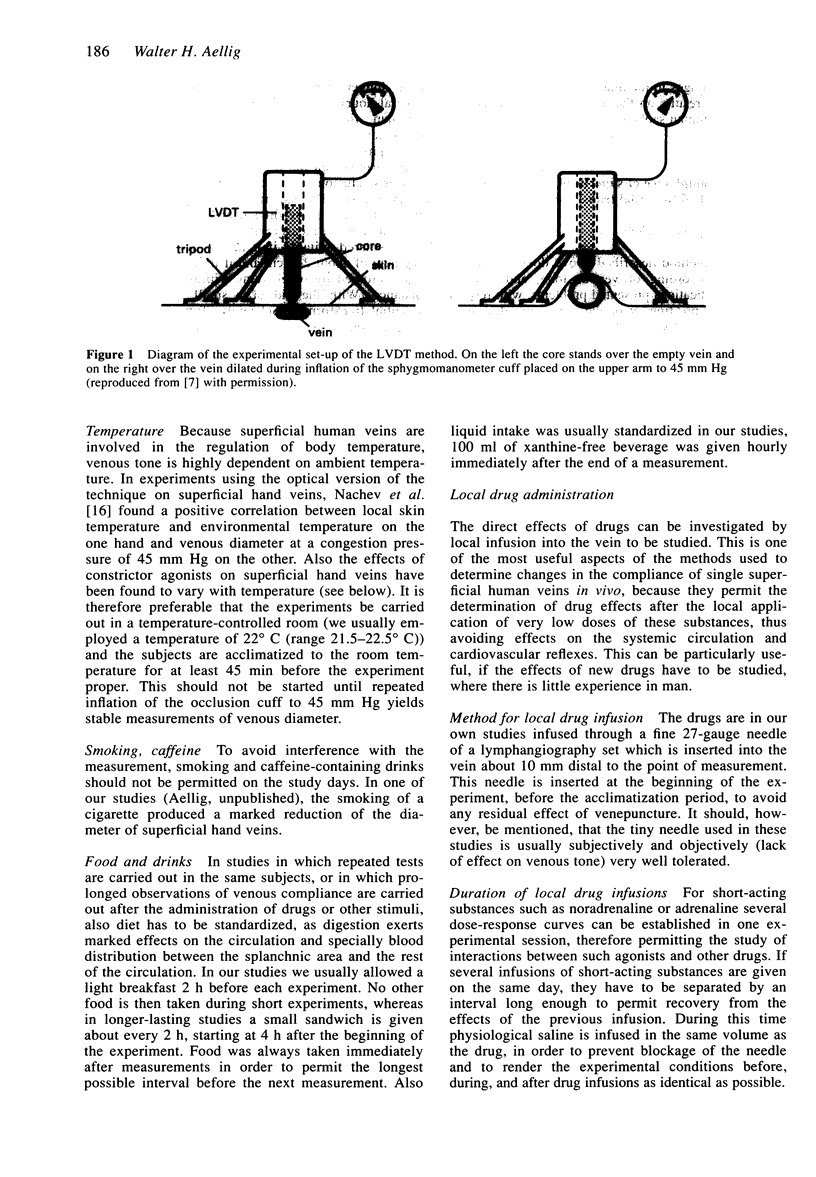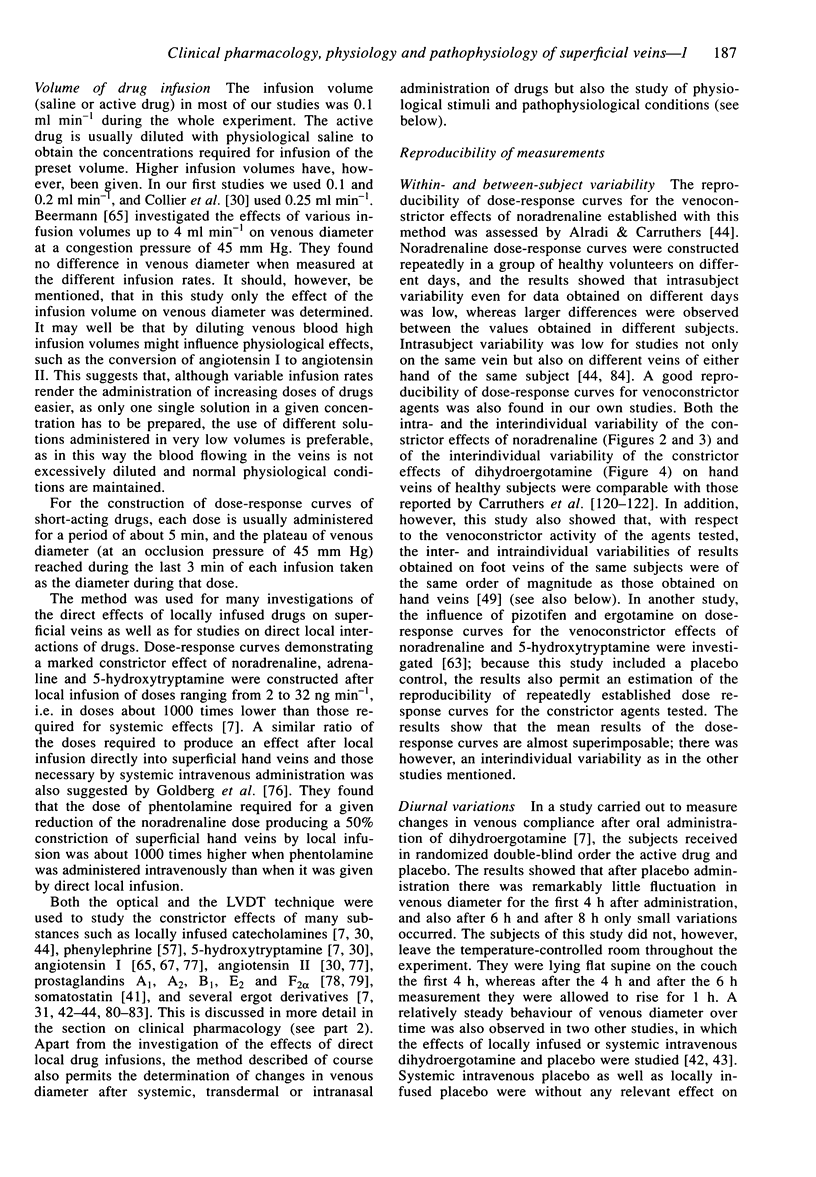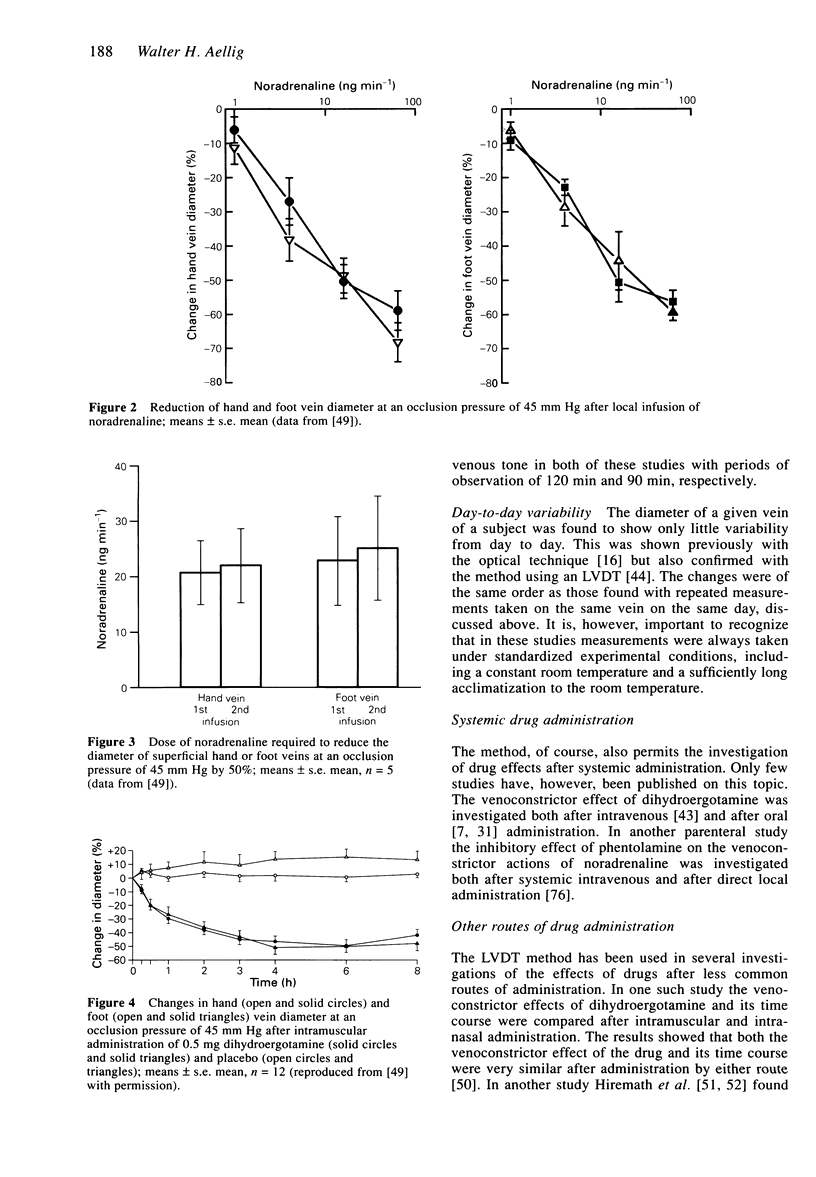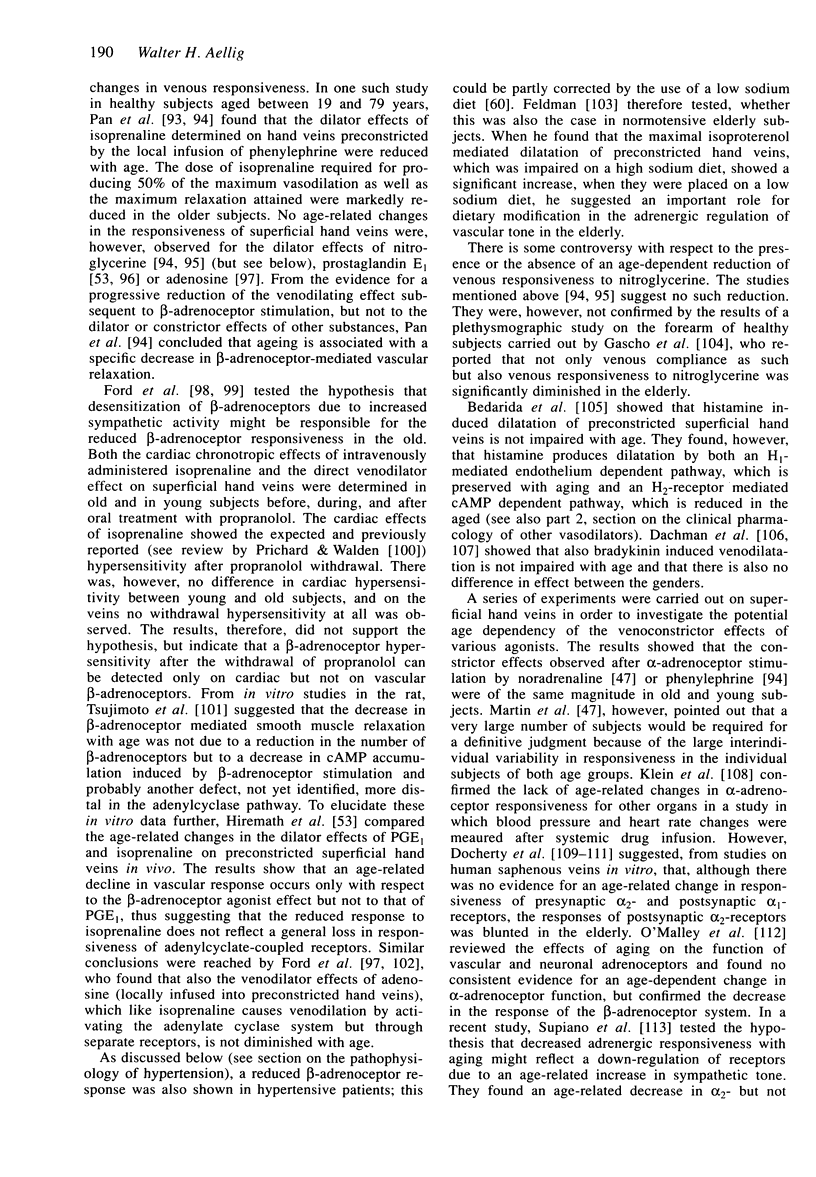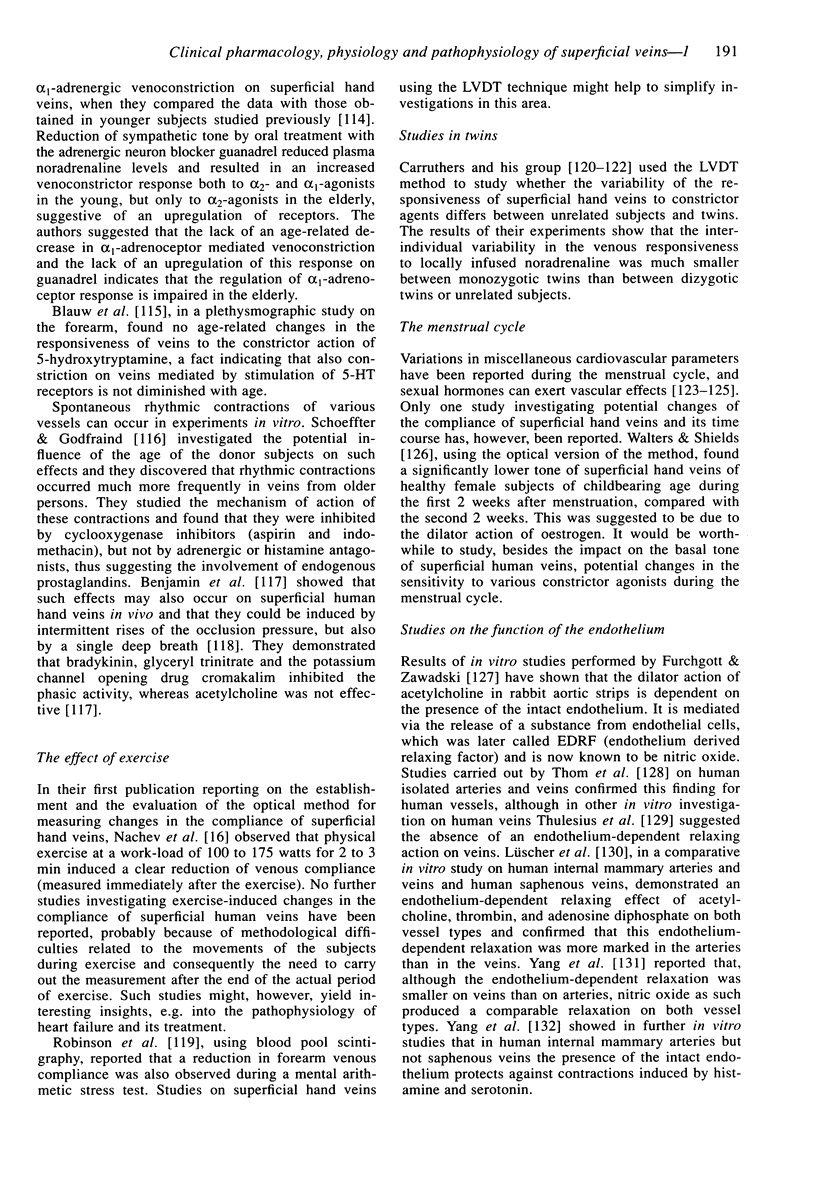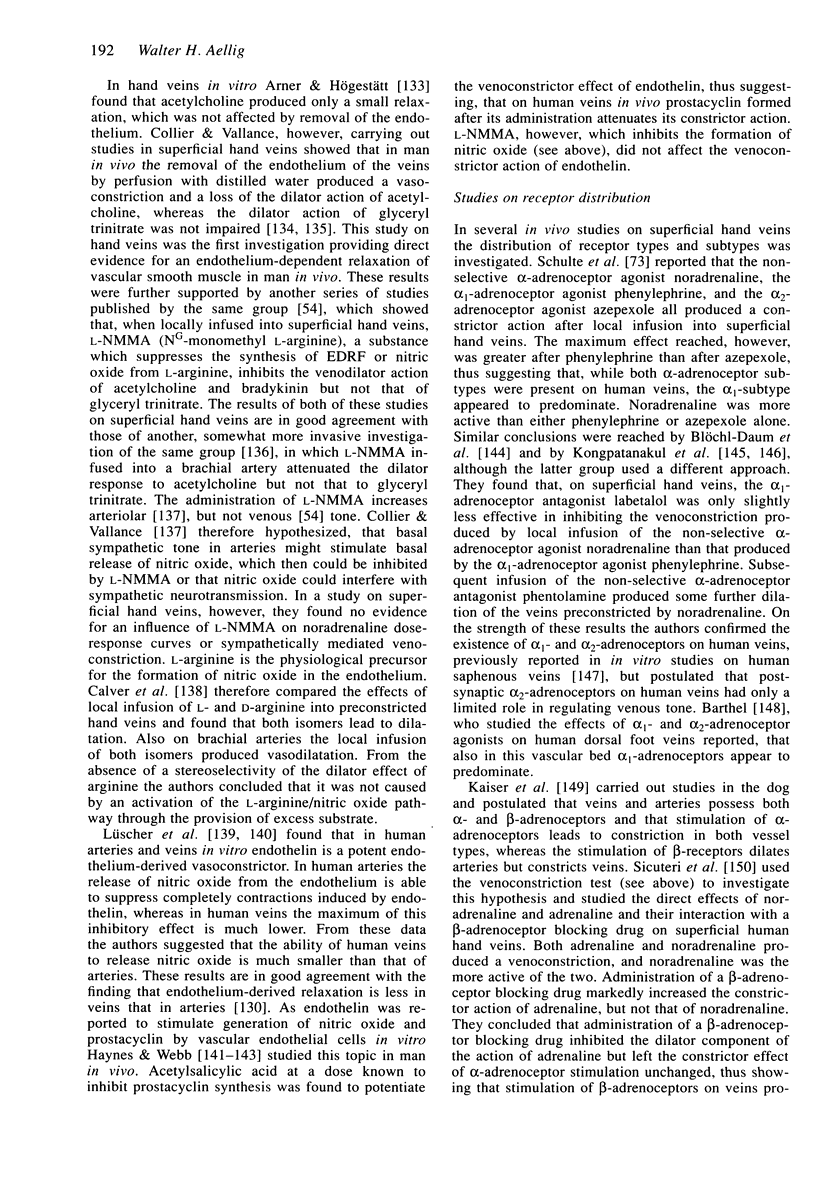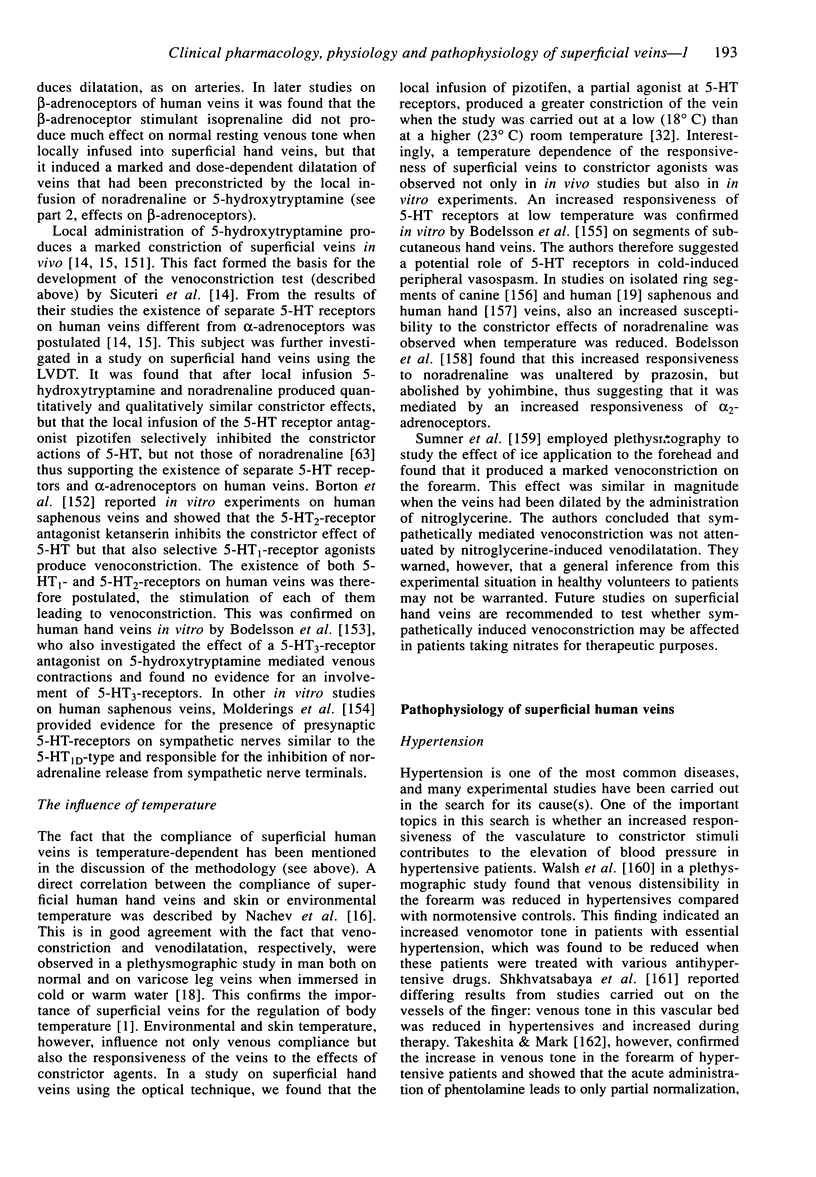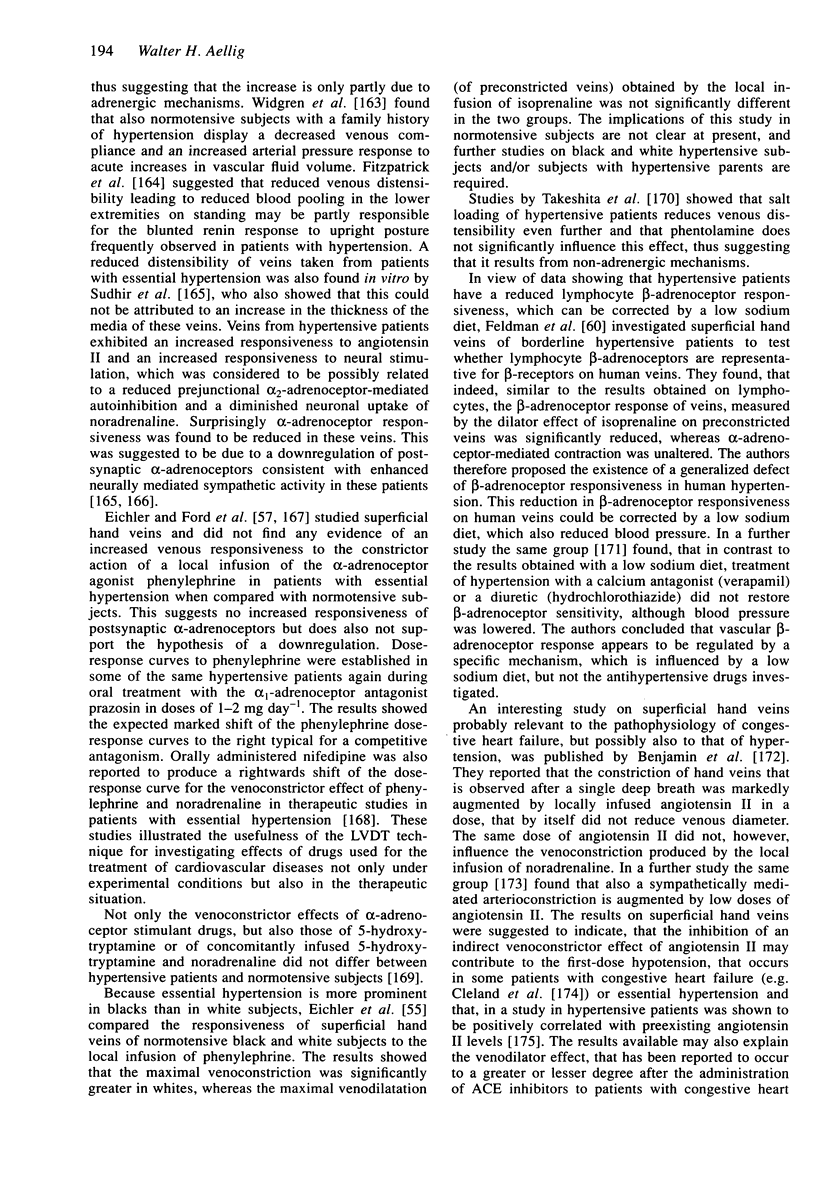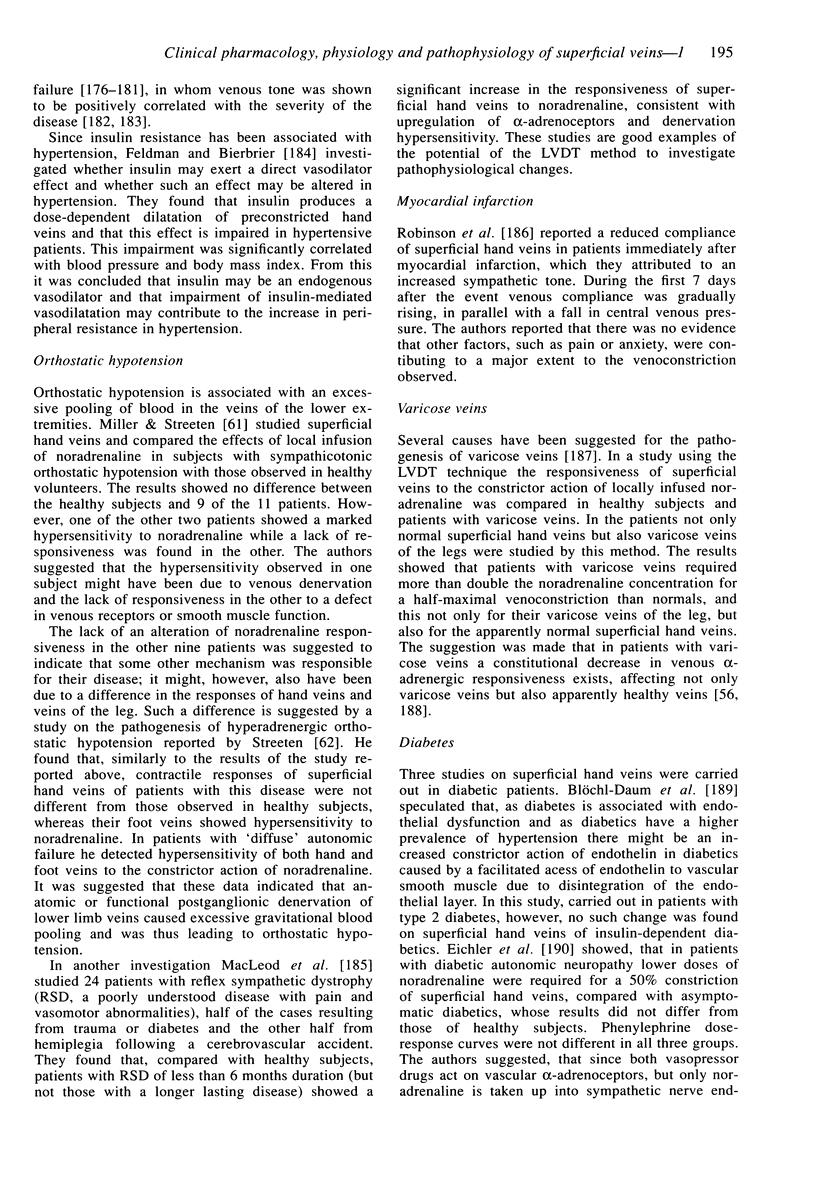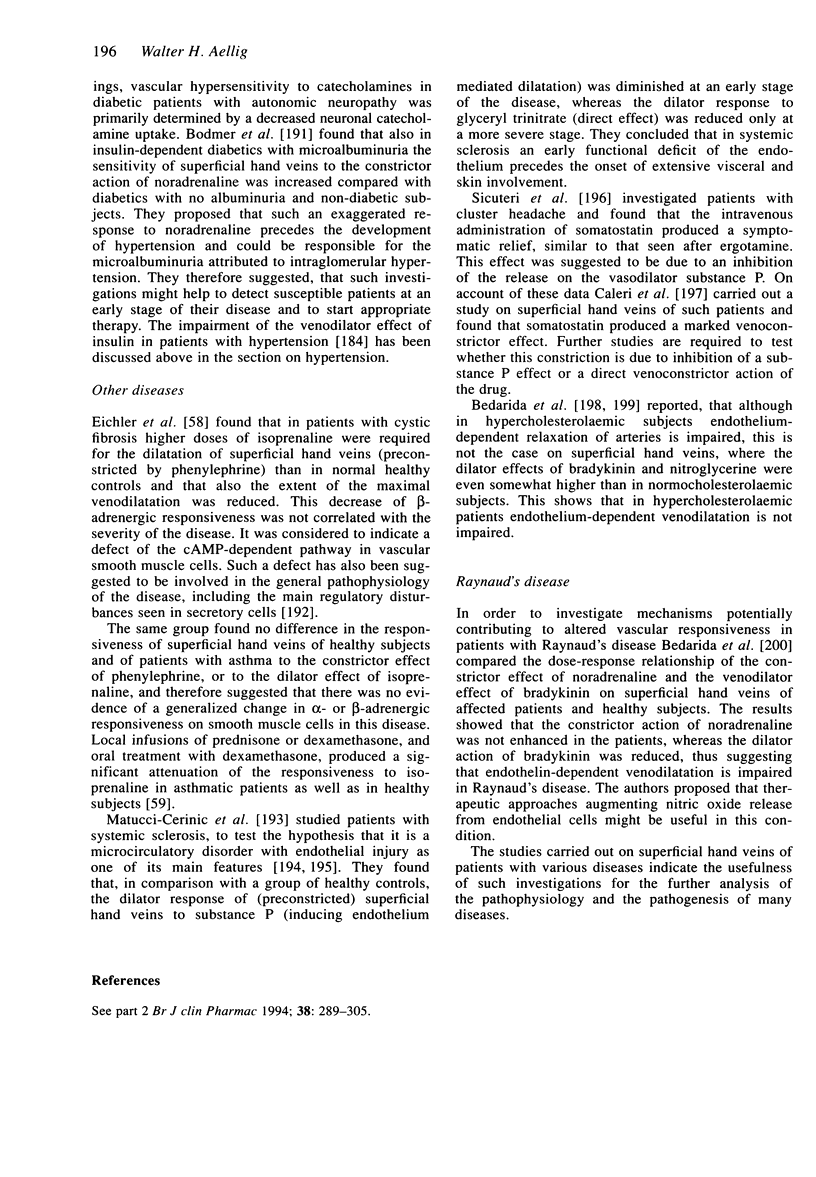Abstract
1. Venous resistance contributes very little to total peripheral resistance; more than half of the total blood volume, however, is contained in the extrathoracic veins. Owing to marked differences between venous and arterial anatomy and physiology, studies on veins and arteries usually require different methodological approaches. Whereas for arteries the most relevant parameters are resistance, pressure and flow, for veins volume and compliance are most important. For studies of general aspects of the peripheral circulatory system, venous occlusion plethysmography is probably the most useful method. The determination of both the rate of rise in limb volume and the total volume rise after inflating a proximally applied occlusion cuff to a subdiastolic pressure permits the concomitant estimation of both arterial flow and venous compliance. 2. Studies of direct pharmacological or physiological effects on veins, interactions of various pharmacological or physiological stimuli, or pathophysiological changes in venous responsiveness have been facilitated by the development of investigational techniques relying on direct measurements of the compliance of single human veins in vivo. One of these, relying on the use of a linear variable differential transformer (LVDT) for determining changes in the compliance of superficial veins at a standardized congestion pressure, has been found very suitable for the practical application in both patients and healthy subjects. 3. Physiological studies were carried out on the effect of age, exercise, temperature, and the menstrual cycle on venous compliance and venous responsiveness to various stimuli. In addition, interindividual variability in venous responsiveness in monozygotic and dizygotic twins and in unrelated subjects was investigated, and studies on the function of the endothelium were carried out in man in vivo. 4. Pathophysiological studies using this technique were reported from patients with hypertension, orthostatic hypotension, myocardial infarction, varicosis, cystic fibrosis, asthma, diabetes, systemic sclerosis, and cluster headache. 5. Clinical pharmacological studies represent a most important field for the use of this method. Studies were carried out on the effects of a large number of constrictor and dilator agents, and also on drug interactions on human veins in vivo. Venoconstriction was observed after local administration of alpha-adrenoceptor and 5-HT-receptor agonists, ergot derivatives, angiotensinogen, angiotensin I and II, and several prostaglandins. 6. Owing to the low venous tone present under effects can usually be quantified only on veins e.g. noradrenaline or 5-hydroxytryptamine. Under these conditions dilatation was observed after the administration of beta-adrenoceptor agonists, cholinergic (muscarinic) agonists, nitrates, calcium antagonists, bradykinin, substance P and several prostaglandins.
Full text
PDF
